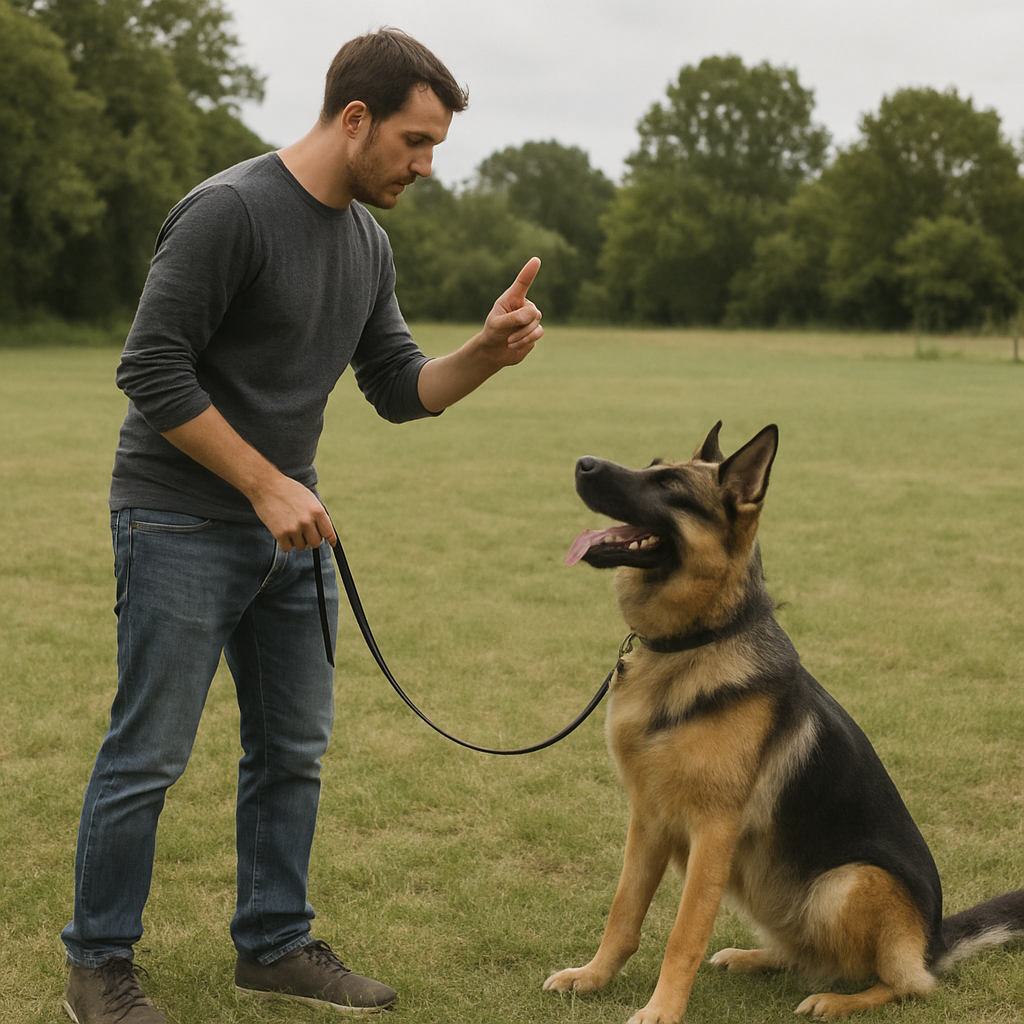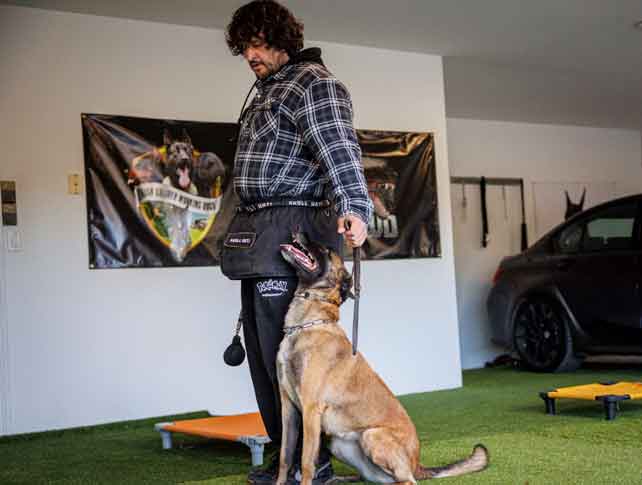Effective Trainers for Aggressive Dog Behavior
Canine aggression can manifest in various ways, such as growling, snapping, biting, or lunging. These behaviors can be alarming and may escalate if not addressed appropriately. It’s crucial to understand that aggression is often a symptom of an underlying issue rather than a standalone problem. It can be a dog’s way of communicating discomfort, fear, or dominance in situations they find challenging. By identifying the cause, you can take the first step toward effective training and rehabilitation. Understanding the specific triggers and contexts of your dog’s aggression is essential in developing a training plan that addresses the root of the behavior rather than just the symptoms.
Common Causes of Aggression
- Fear and Anxiety: Dogs may become aggressive when they feel threatened or scared. This is often referred to as fear aggression. It can occur in response to specific people, other animals, or situations that remind the dog of past traumatic experiences. Helping a dog overcome fear aggression involves building their confidence through gradual exposure to the feared object or situation while providing positive reinforcement.
- Territorial Behavior: Some dogs may exhibit aggression when they perceive a threat to their territory or family. This type of aggression is instinctual and can be triggered by strangers entering the home or unfamiliar animals approaching. Training to manage territorial aggression involves teaching the dog to distinguish between real threats and benign situations, often through controlled exposure and reinforcement of calm behavior.
- Socialization Issues: Lack of proper socialization during puppyhood can lead to aggression as dogs mature. Dogs that have not been exposed to a variety of people, pets, and environments may react fearfully or defensively to new experiences. Socialization should be a gradual process, allowing the dog to encounter new stimuli at their own pace to build positive associations.
- Medical Conditions: Health issues or pain can trigger aggressive behavior in dogs. It’s essential to rule out any medical causes with a veterinarian. Conditions such as arthritis, dental disease, or neurological disorders can contribute to aggression, and addressing these medical issues can often alleviate the aggressive behavior.
- Protective Instincts: Dogs may become aggressive when protecting their owners or possessions. This protective aggression can be directed towards perceived threats and is often rooted in the dog’s bond with its family. Training should focus on teaching the dog to trust its owner’s judgment about when protection is necessary.
Understanding these causes is vital in selecting the appropriate training method for your dog. Each cause may require a different approach, and often a combination of methods is the most effective strategy.
Training Options for Aggressive Dogs
Professional Dog Trainers
Professional dog trainers specializing in aggressive behavior can provide valuable assistance. They have the expertise to assess the severity of the aggression and develop a tailored training plan. These trainers are skilled in reading canine body language and understanding the nuances of aggressive behavior, allowing them to create a safe and effective training environment. Here are some options to consider:
- Aggressive Dog Boot Camp: These intensive programs offer round-the-clock training and supervision to address severe aggression issues. They provide a structured environment where the dog can learn new behaviors away from familiar triggers, often resulting in quicker progress.
- Obedience Training for Aggressive Dogs: Structured obedience classes can help reinforce good behavior and establish boundaries. These classes focus on teaching the dog basic commands and impulse control, which can help manage aggressive tendencies by promoting a sense of routine and security.
- Puppy Aggression Classes: Early intervention is key. Puppy classes focus on socialization and preventing aggressive behavior before it becomes a problem. These classes emphasize positive interactions with other puppies and people, helping to set a foundation for a well-adjusted adult dog.
In-Home Training
For some pet owners, in-home training may be the best option. It allows for personalized attention and addresses aggression in the dog’s natural environment. This setting can be particularly beneficial for dogs that become anxious or overstimulated in new environments. Here are some tips for training an aggressive dog at home:
- Consistency: Establish clear rules and boundaries and consistently reinforce them. Consistency helps the dog understand expectations and reduces confusion that can lead to aggressive behavior.
- Positive Reinforcement: Reward good behavior with treats and praise to encourage repetition. Positive reinforcement helps build a strong bond between the dog and owner, fostering a trust-based relationship that is crucial for effective training.
- Avoid Punishment: Punishing an aggressive dog can exacerbate the problem. Focus on positive reinforcement instead. Punishment can increase fear and anxiety, leading to more aggressive behavior. Instead, redirect the dog’s attention and reward calm behavior.
Specialized Training Programs
Some dogs require more specialized training approaches, especially if they exhibit fear aggression or have unique behavioral issues. These programs often involve a more in-depth assessment of the dog’s behavior and a highly customized training plan. Look for trainers who:
- Specialize in Fear Aggression: These trainers understand the intricacies of fear-based behavior and can tailor their methods accordingly. They work on desensitization and counter-conditioning techniques to help the dog overcome fear-related triggers.
- Offer Custom Programs: Customized training plans consider the dog’s specific triggers and needs. These programs are designed to address the unique challenges posed by each dog’s behavior and often involve ongoing support and adjustments as the dog progresses.
Choosing the Right Trainer
by Barnabas Davoti (https://unsplash.com/@davotibarna)
Selecting the right trainer is crucial for the success of the training program. A good trainer will not only have the necessary skills but also the ability to connect with both the dog and the owner. Here are some factors to consider:
- Experience and Credentials: Look for trainers with experience handling aggressive dogs and relevant certifications. A well-qualified trainer will have a proven track record and a deep understanding of canine behavior.
- Methods and Philosophy: Ensure the trainer uses humane, positive reinforcement techniques rather than harsh or punitive methods. Training should be a positive experience for the dog, focusing on rewards and encouragement rather than fear or intimidation.
- Success Stories: Seek testimonials or case studies from other pet owners who have worked with the trainer. Real-life examples of the trainer’s work can provide valuable insights into their effectiveness and approach.
- Communication and Support: A good trainer should be willing to communicate openly and provide ongoing support throughout the training process. Effective training requires collaboration between the trainer and the pet owner, with regular updates and adjustments to the training plan as needed.
Aggressive Dog Training Tips
Safety First
Safety should always be the top priority when dealing with aggressive dogs. Ensuring the safety of both the dog and those around them is essential to creating a productive training environment. Here are some safety tips to keep in mind:
- Use a Muzzle: If necessary, use a muzzle during training sessions to prevent bites. A muzzle is not a punishment but a safety tool that allows the dog to participate in training without posing a risk to others.
- Leash Control: Maintain control with a sturdy leash to prevent lunging or running. Proper leash handling can prevent the dog from acting on aggressive impulses and ensures the trainer remains in control of the situation.
- Avoid Triggers: Identify and avoid situations or environments that may trigger aggressive behavior. Understanding and managing these triggers is key to preventing outbursts and creating a calm training environment.
Consistency and Patience
Training an aggressive dog requires time, patience, and consistency. Progress may be slow, but persistence is key. Celebrate small victories and remain committed to the training process. Remember that setbacks are a normal part of the journey, and maintaining a positive outlook can help both you and your dog stay motivated.
Understanding Body Language
Learn to recognize and interpret your dog’s body language. Understanding cues such as ear position, tail movement, and posture can help you anticipate and prevent aggressive outbursts. By becoming more attuned to your dog’s signals, you can intervene before the aggression escalates, redirecting their focus and reinforcing calm behavior.
Conclusion
Aggressive dog behavior can be challenging, but with the right approach, it is possible to manage and even modify these behaviors. Whether you choose professional training, in-home methods, or specialized programs, the key is to address the issue with patience, consistency, and understanding. Each method has its benefits, and finding the right balance for your dog is crucial for success. By selecting an effective trainer and committing to the process, you can help your dog become a well-behaved and happy member of your family.
Remember, every dog is unique, and what works for one may not work for another. Stay open to trying different approaches and always prioritize your dog’s well-being and safety. Continuously learning and adapting your strategies will help ensure the best possible outcome for your dog’s training journey.








